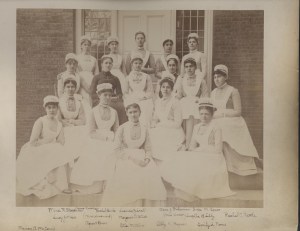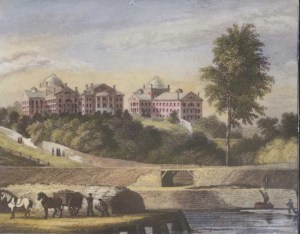The first psychiatric hospitals in the United States brought a revolutionary perspective toward people with mental illness — the idea that the aim was to cure, not to subdue. McLean Hospital’s celebration of its 200th year in 2011 is great fodder for mulling over the psychiatric care of the past, and for trying to imagine psychiatric facilities of the future.
The third oldest psychiatric hospital in continuous operation in the United States, McLean was founded on the same day as Massachusetts General Hospital in 1811, but opened its doors 3 years before the general hospital, Adriana Bobinchock told me at the American Psychiatry Association annual meeting. Today, McLean Hospital is the largest psychiatric affiliate of Harvard Medical School and partners with Massachusetts General and Brigham and Women’s Hospitals, said Ms. Bobinchock, director of public relations for McLean Hospital.
The only older continuously operating psychiatric hospitals in this country may be Eastern State Hospital, founded in 1773 in Williamsburg, Va., and Spring Grove Hospital Center, founded in Catonsville (near Baltimore), Md. in 1797.
A brief history of McLean Hospital contains an eclectic collection of “firsts.” It opened the first psychiatric school of nursing in 1882. It was the first U.S. psychiatric hospital to open research laboratories. And it’s the origin of the nursery song, “Mary Had a Little Lamb,” which was inspired by one Mary Sawyer, an attendent at the McLean Asylum for the Insane (as it was then called) in 1832 who had, indeed, been followed by a lamb to school.
Animals played an important role at the asylum, which evolved into the hospital. Until as recently as 1944, it operated as a nearly self-sustaining community, with a farm, a blacksmith, and an upholstery shop. The asylum originally was located in bucolic Somerville, Mass., because the quiet, rural environment was thought to be therapeutic. Before long, urban encroachment wrecked the peace, including two railroad lines that cut through the grounds, so the facility moved to new grounds in Belmont, Mass., where it remains today. The hospital has grown from seeing 13 patients in its first 3 months to now admitting more than 9,000 adults and children each year to inpatient and residential levels of care, as well as providing more than 58,000 day-treatment and outpatient visits per year in seven satellite programs around Massachusetts.
The psychiatric diagnoses of 1811 bear little resemblance with today’s diagnoses of mental illnesses. Watch the brief video interview with Ms. Bobinchock (below) to hear some of the reasons patients first came to McLean. It all makes me wonder how we’ll conceptualize mental illness another 200 years down the road. This year, when proposed revisions in the DSM-V will greatly rearrange some of our current diagnostic categories, it’s not hard to imagine that we’ll be using very different descriptions of mental illness even 50 years from now, much less 200.
And I wonder if some of the characteristics of yesteryear’s asylums might return in the future. Will a connection with nature be fostered as a healing force? Will communities increasingly be expected to be self-sustaining? Will we have cures for the worst psychiatric illnesses, so that no ever need be “subdued”?
How do you imagine “psychiatric hospitals” in the future?
–Sherry Boschert




